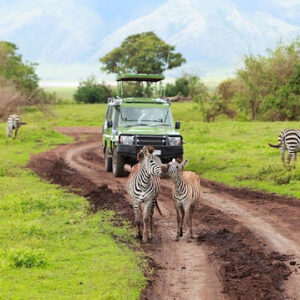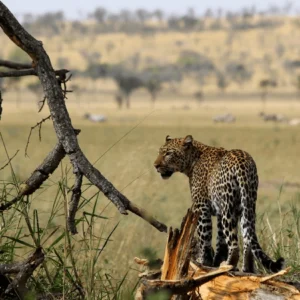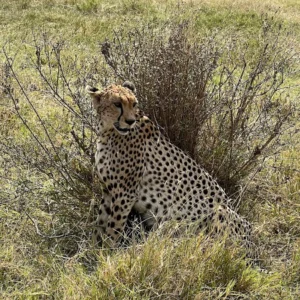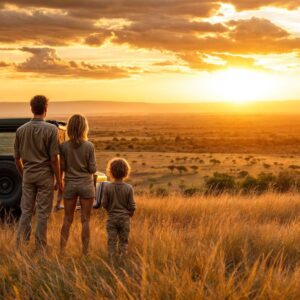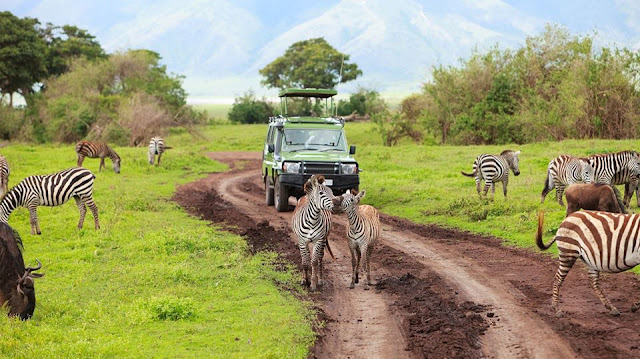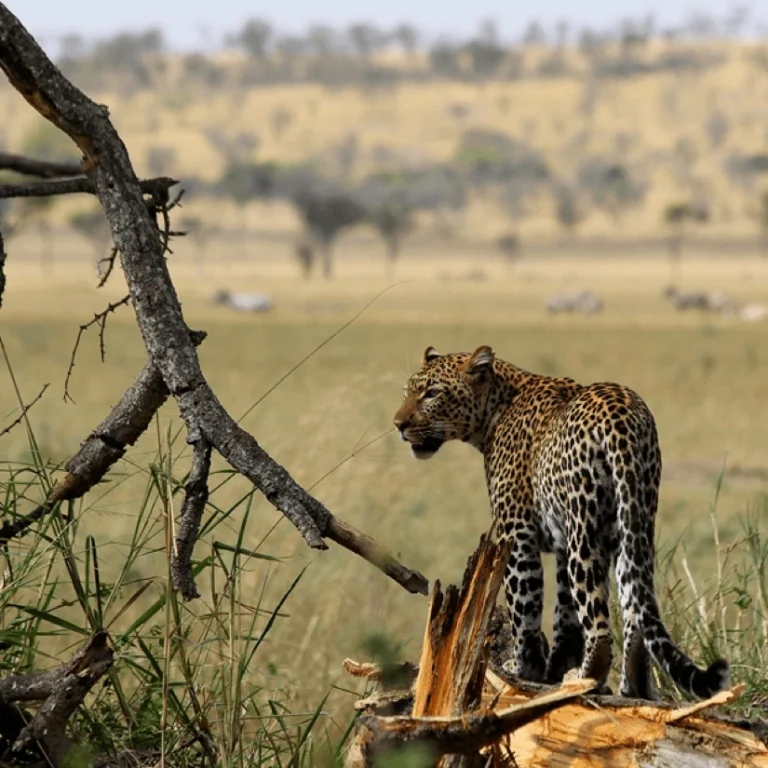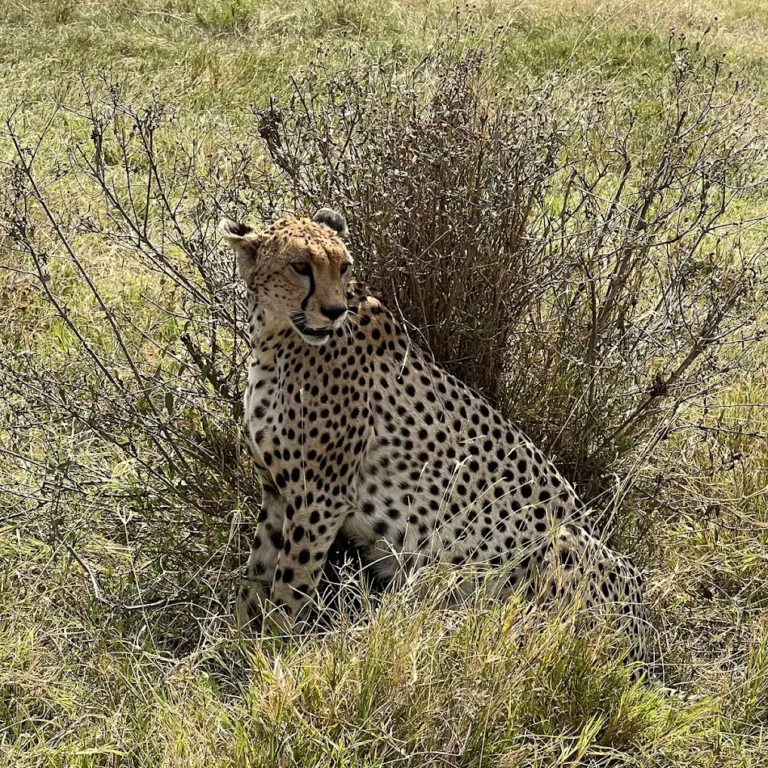Africa. The name alone evokes powerful images, often shaped by media portrayals that, while sometimes dramatic, frequently fall short of capturing the continent’s immense diversity, vibrant cultures, and dynamic realities. For many prospective travelers, preconceived notions can create barriers, overshadowing the incredible experiences that await. It’s time to set the record straight and debunk some of the most pervasive myths about traveling to Africa.
Many common myths surround travel to Africa, including the ideas that it’s a single country, always hot and desert-like, dangerous, or expensive. In reality, Africa is a vast continent with 54 diverse countries, varied climates, and a wide range of experiences, from budget-friendly to luxurious. Safety varies by location, and it’s crucial to research specific destinations and take necessary precautions. By shedding these misconceptions, we can truly appreciate Africa for what it is: a vast, complex, and endlessly fascinating continent, brimming with unique adventures, warm hospitality, and a rich tapestry of life.
1. Myth: Africa is a country.
Reality: This is perhaps the most fundamental and widespread misconception. Africa is a continent, not a country. It is the world’s second-largest continent, comprising 54 distinct and incredibly diverse countries, each with its own unique history, cultures, languages, cuisines, landscapes, and political systems. To speak of “Africa” as a single entity is akin to referring to “Asia” or “Europe” as one nation. From the ancient pyramids of Egypt to the bustling markets of Morocco, the vast savannas of Tanzania, and the vibrant cities of South Africa, the continent offers an astonishing array of experiences that vary dramatically from one nation to the next.
2. Myth: It’s always hot in Africa.
The claim that it’s always hot in Africa is a myth. Africa has diverse climates, ranging from equatorial rainforests to arid deserts and even snow-capped mountains. While some parts of Africa experience high temperatures year-round, others have cooler temperatures and even experience snow. Reality: While Africa certainly has its hot regions, the idea that it’s uniformly scorching is far from the truth. Africa boasts an incredibly diverse range of climates. You’ll find:
Deserts. Like the Sahara and Namib, which are hot during the day but can be surprisingly cold at night. Tropical Rainforests. Along the equator, characterized by high humidity and consistent rainfall. Rainfall patterns also vary greatly across Africa, with some regions experiencing heavy rainfall and others experiencing drought. Temperate Zones. In the northern and southern extremes, they experience four distinct seasons. Temperatures can vary greatly across the continent. Some areas, like the Sahara Desert, can be extremely hot, while others, like the highlands of Ethiopia and the peaks of Mount Kilimanjaro, can be quite cold, even experiencing snowfall.
High-Altitude Mountains. Peaks like Mount Kilimanjaro and Mount Kenya are permanently snow-capped and can be extremely cold, requiring specialized gear for climbing. Coastal Areas. Often have humid, tropical climates moderated by ocean breezes. The idea that Africa is uniformly hot is a misconception. The continent’s diverse geography and climates mean that temperatures and weather conditions can vary significantly throughout the year and across different regions.
Seasonal variations are significant, and even within a single country, temperatures can fluctuate dramatically. Many parts of Africa experience distinct seasons, including rainy seasons, dry seasons, and even winter. For example, while some areas in Southern Africa might be experiencing summer, other regions in the Northern Hemisphere are in winter.
3. Myth: Africa is riddled with diseases
Reality: While certain health precautions are necessary for travel to many African countries (as they are for many parts of the world), the continent is not “riddled with diseases.” Common concerns like malaria and yellow fever are manageable with proactive measures such as vaccinations, anti-malarial medication, and insect repellent. Major cities and tourist hubs often have modern medical facilities. Travelers should consult their doctor or a travel clinic well in advance for personalized advice, but fear of widespread, uncontrollable disease is largely unfounded and outdated.
4. Myth: Africa is poor and underdeveloped
Reality: This myth perpetuates a simplistic and often colonial narrative. While many African nations face economic challenges and development disparities, the continent is also home to rapidly growing economies, innovative tech hubs, and a thriving middle class. Cities like Nairobi, Johannesburg, and Accra are vibrant centers of commerce, art, and technology. Investment in infrastructure, education, and renewable energy is transforming many regions. Focusing solely on poverty overlooks the immense resilience, entrepreneurial spirit, and dynamic progress happening across Africa.
5. Myth: Safari is the only travel option
The idea that a safari is the only travel option in a place like Africa is a myth. While safaris are a popular and iconic travel experience, the continent offers a diverse range of other attractions and activities. These include tropical beaches, world-class diving, vibrant cities, wineries, mountains, jungles, waterfalls, deserts, and cultural and historical sites.
Reality. Safaris are indeed a highlight, but they are just one facet of Africa’s incredible travel offerings. The continent provides a vast array of experiences: Cultural Immersion. Exploring ancient cities like Marrakech, Fes, or Stone Town, visiting Maasai villages, or attending vibrant festivals. Beach Holidays. Idyllic coastlines and islands like Zanzibar, Seychelles, and Mauritius offer pristine beaches and world-class diving.
Mountaineering & Trekking. Conquering Kilimanjaro, Mount Kenya, or exploring the Drakensberg Mountains. Adventure Sports. White-water rafting the Zambezi, sandboarding in Namibia, bungee jumping, or shark cage diving in South Africa. City Breaks. Enjoying the cosmopolitan vibe of Cape Town, the history of Cairo, or the music scene of Dakar. Historical & Archaeological Sites. From the pyramids of Egypt to the ancient ruins of Great Zimbabwe and the rock-hewn churches of Lalibela.
6. Myth: Street food is unsafe
The perception that African street food is inherently unsafe is a myth. While there are valid concerns about food safety practices in some areas, street food in Africa, like anywhere else, can be a source of both delicious and safe meals. Factors like hygiene, proper food handling, and waste disposal play a crucial role in determining safety, and these vary among vendors.
Reality. As with any travel destination globally, exercising caution with street food is wise. However, dismissing all African street food as unsafe means missing out on incredibly delicious, authentic, and often affordable culinary experiences. In many African cities and towns, street food is a vibrant part of daily life. Look for vendors with long queues, high turnover (meaning fresh ingredients), and visible hygiene practices. Trying local delicacies from reputable stalls can be a highlight of your trip.
7. Myth: Solo travel is too dangerous
Reality: Solo travel, particularly for women, requires heightened awareness and preparation anywhere in the world, not just in Africa. However, many African countries are perfectly safe and incredibly rewarding for solo travelers. By choosing reputable tour operators, staying in well-reviewed accommodations, being aware of your surroundings, and trusting your instincts, solo travelers can have empowering and safe experiences. Many safaris, for instance, naturally group solo travelers together, providing built-in companionship.
8. Myth: Africa lacks modern technology
Reality: This myth is quickly dispelled upon arrival in most African cities. Africa has undergone a massive technological leap, particularly in mobile connectivity. Mobile phone penetration is widespread, and many countries are leaders in mobile banking and innovative tech solutions. Major cities boast growing tech hubs, reliable internet access (though it can be slower in remote areas), and a tech-savvy population.
9. Myth: Africa has no history or culture
Reality: Africa is the cradle of humanity and boasts an incredibly rich and ancient history, predating many Western civilizations. From the pharaohs of ancient Egypt and the powerful kingdoms of Mali and Great Zimbabwe to the vibrant oral traditions, diverse art forms, and complex social structures of hundreds of ethnic groups, Africa’s cultural heritage is profound and multifaceted. Every country offers a unique cultural tapestry, from traditional dances and music to intricate crafts and deeply rooted spiritual beliefs.
10. Myth: It’s always a good time for a safari
Reality: While wildlife viewing is possible year-round in many parks, there are optimal times for specific safari experiences. For instance, the dry season (June-October) is generally best for overall game viewing as animals congregate around water sources. However, the wet season (Green Season, November-May) offers lush landscapes, lower prices, fewer crowds, and specific events like the wildebeest calving in the Southern Serengeti (Jan-March), which is a predator-heavy spectacle. Understanding these seasonal nuances helps tailor your safari to your interests.
11. Myth: You Can Only See the Great Migration Between July and October.
The statement is a myth. While the dramatic Mara River crossings often occur between July and October, the Great Migration is a continuous, year-round cycle with various exciting events happening throughout the year. The herds are always moving, so it’s possible to see them at different times, not just during those months.
Reality. This is a common misconception. The Great Wildebeest Migration is a year-round, continuous cycle, not a static event. While the dramatic Mara River crossings (July-October) are famous, other equally vital and spectacular phases occur throughout the year: Calving Season. In the Southern Serengeti (Ndutu area) from late January to February, hundreds of thousands of wildebeest calves are born. Long Rains. The herds move north through the central and western Serengeti from April to June. Return South. From November to December, they make their way back to the southern plains. A reputable safari operator can advise on where to be to witness specific phases.
12. Myth: You’ll Only See the Big Five.
The myth that you will only see the “Big Five” on safari is false. While the “Big Five” (lion, leopard, elephant, rhino, and buffalo) are popular and iconic, there are many other fascinating animals and natural wonders to discover on safari. Focusing solely on the “Big Five” can limit the overall safari experience and enjoyment.
Reality. While the Big Five (lion, leopard, elephant, rhino, buffalo) are iconic and highly sought after, focusing solely on them means missing out on Africa’s immense biodiversity. The continent is home to an astonishing array of wildlife, including Cheetahs. The fastest land animals. Zebras & Giraffes. Ubiquitous and beautiful. Hippos & Crocodiles. Dominating the waterways. Hyenas & Wild Dogs. Fascinating predators and scavengers. Countless Antelopes. From tiny dik-diks to majestic elands. Over 2,000 bird species. Many with vibrant colors and unique behaviors. A safari offers a chance to appreciate the entire ecosystem, not just five animals.
13. Myth: Tanzania Safaris Are Expensive.
It’s a myth that all Tanzania safaris are expensive. While luxury safaris can be pricey, there are many affordable options available, especially with careful planning and choosing the right type of trip. Tanzania safaris can range in price, and while some are definitely luxurious and expensive, others can be quite budget-friendly. Here’s a breakdown of why the “expensive” myth exists and what options can make a safari more affordable:
Reality. While a luxury safari in Tanzania can be a significant investment, the idea that all Tanzania safaris are prohibitively expensive is a myth. There are options to suit various budgets: Budget Camping Safaris. Offer a more rustic experience with tents, but still provide excellent game viewing. Mid-Range Tented Camps & Lodges. Provide comfortable accommodations at a more accessible price point. Luxury & Ultra-Luxury Safaris. Offer exclusive experiences, private vehicles, and opulent lodges. The cost also depends on the season, duration, and number of parks visited. With careful planning, a Tanzanian safari can be made more affordable.
14. Myth: Tanzania Safaris Are Only for Adults.
No, that’s a myth. Tanzania safaris are suitable for people of all ages, including families with children. While some parks and camps may have age restrictions (often around 6 or 8 years old), many others welcome families and offer tailored itineraries for younger travelers. Safaris can be a fantastic way for children to learn about wildlife, nature, and different cultures.
Reality. This is far from true. Tanzania safaris can be incredibly family-friendly and are suitable for travelers of all ages. Many lodges and camps offer: Kids’ Clubs & Activities. Engaging programs are designed for younger travelers. Family Suites. Accommodations tailored for families. Child-Friendly Guides. Experienced guides who know how to keep children entertained and engaged. Private Vehicles. Allowing families to set their own pace and tailor game drives to their children’s interests. Witnessing wildlife through the eyes of a child is a truly magical experience.
Conclusion: Embrace the Real Africa
Africa is a continent of unparalleled beauty, profound history, and vibrant contemporary life. By letting go of outdated myths and embracing an open, curious mindset, travelers can unlock a world of authentic experiences that challenge perceptions and create indelible memories. The true Africa is waiting, ready to surprise, inspire, and captivate all who venture to explore its incredible realities.

